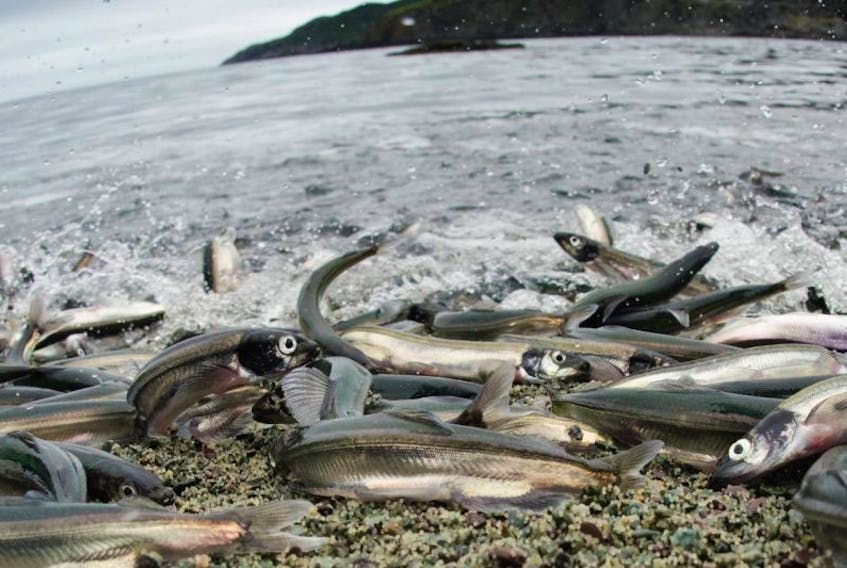The latest scientific information on the status of the caplin stocks along the east and northeast coasts of the province hasn’t spawned any new hope for serious growth of the species.
The stock is still only about 25 per cent of the post-collapse high observed in 2014. Caplin stocks collapsed in the early 1990s along with northern cod.
The Department of Fisheries and Oceans (DFO) said Monday that despite a small increase in 2018, the spring acoustic abundance index remains at a relatively low level, similar to levels observed in the late 2000s.
“A new forecast model predicts that the abundance index will increase slightly in 2019, but decrease in 2020,” a technical briefing document states.
The document was presented Monday by DFO stock assessment biologist Christina Bourne.
What this information means for the caplin fishery this upcoming season is no real change from last year.
“The results of the forecast model, in conjunction with the results of the spring 2018 acoustic survey and environmental data, suggest that the amount of caplin available to the fishery in 2019 should be similar to that of 2018,” the document states.
In 2018, fishermen landed the full Total Allowable Catch (TAC) of 19,823 tonnes of caplin in the area (zone 2J3KL).
Some in the fishing industry argue that caplin, the main food of cod, should not be fished at all in order the facilitate a faster recovery of northern cod.
The Fish Food and Allied Workers’ (FFAW)—Unifor said in a news release Monday that it is concerned DFO science is not painting an adequate picture of the stock health.
“Current science for caplin is lacking in several key areas,” said President Keith Sullivan. “Important information from the fishery is not included (such as an estimate of spawning stock biomass), nor are key factors such as seal predation.”
“Current science for caplin is lacking in several key areas." — Keith Sullivan, FFAW President
Sullivan said information from the survey can differ widely from what fish harvesters see on the water.
FFAW Inshore council member Dennis Chaulk said fishermen saw an abundance of caplin in the water last year.
“The aggregations were larger and more frequent, and as a result we caught more caplin with considerably less effort during the 2018 fishery,” he said. “But that information isn’t taken into account by DFO science.”
DFO says caplin are a key prey species in the Newfoundland and Labrador marine ecosystem and the briefing document states that environmental conditions are the main driver of caplin abundance.
“Strong year classes can be produced from a small stock when environmental conditions are favourable for fish larval survival and vice versa,” the document states.
Also of note, since 2015, primary and secondary production of phytoplankton and zooplankton (food for caplin) in the Newfoundland and Labrador shelf have been below average, which has an impact on caplin and higher levels of marine species in the food chain.
DFO fisheries management will now consult with industry stakeholders and indigenous groups in the coming weeks where the science advice will be presented and discussed.
The department will then set the TAC for the 2019 caplin fishery.
RELATED









